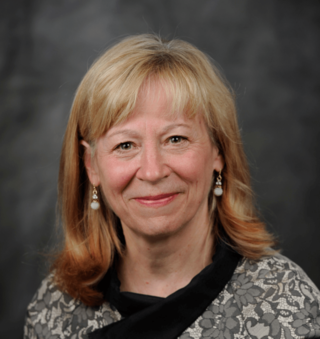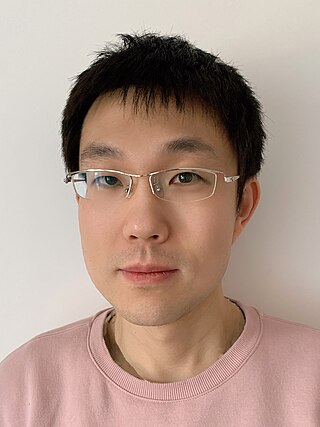Related Research Articles

Inorganic chemistry deals with synthesis and behavior of inorganic and organometallic compounds. This field covers chemical compounds that are not carbon-based, which are the subjects of organic chemistry. The distinction between the two disciplines is far from absolute, as there is much overlap in the subdiscipline of organometallic chemistry. It has applications in every aspect of the chemical industry, including catalysis, materials science, pigments, surfactants, coatings, medications, fuels, and agriculture.

Infrared spectroscopy is the measurement of the interaction of infrared radiation with matter by absorption, emission, or reflection. It is used to study and identify chemical substances or functional groups in solid, liquid, or gaseous forms. It can be used to characterize new materials or identify and verify known and unknown samples. The method or technique of infrared spectroscopy is conducted with an instrument called an infrared spectrometer which produces an infrared spectrum. An IR spectrum can be visualized in a graph of infrared light absorbance on the vertical axis vs. frequency, wavenumber or wavelength on the horizontal axis. Typical units of wavenumber used in IR spectra are reciprocal centimeters, with the symbol cm−1. Units of IR wavelength are commonly given in micrometers, symbol μm, which are related to the wavenumber in a reciprocal way. A common laboratory instrument that uses this technique is a Fourier transform infrared (FTIR) spectrometer. Two-dimensional IR is also possible as discussed below.

Spectroscopy is the field of study that measures and interprets the electromagnetic spectra that result from the interaction between electromagnetic radiation and matter as a function of the wavelength or frequency of the radiation. In simpler terms, spectroscopy is the precise study of color as generalized from visible light to all bands of the electromagnetic spectrum.

The ISIS Neutron and Muon Source is a pulsed neutron and muon source, established 1984 at the Rutherford Appleton Laboratory of the Science and Technology Facilities Council, on the Harwell Science and Innovation Campus in Oxfordshire, United Kingdom. It uses the techniques of muon spectroscopy and neutron scattering to probe the structure and dynamics of condensed matter on a microscopic scale ranging from the subatomic to the macromolecular.
The School of Chemistry, University of Sydney is a school of the Faculty of Science at the University of Sydney.
Neutron spectroscopy is a spectroscopic method of measuring atomic and magnetic motions by measuring the kinetic energy of emitted neutrons. The measured neutrons may be emitted directly, or they may scatter off cold matter before reaching the detector. Inelastic neutron scattering observes the change in the energy of the neutron as it scatters from a sample and can be used to probe a wide variety of different physical phenomena such as the motions of atoms, the rotational modes of molecules, sound modes and molecular vibrations, recoil in quantum fluids, magnetic and quantum excitations or even electronic transitions.

Geraldine Lee Richmond is an American chemist and physical chemist who is serving as the Under Secretary of Energy for Science in the US Department of Energy. Richmond was confirmed to her DOE role by the United States Senate on November 5, 2021. Richmond is the Presidential Chair in Science and professor of chemistry at the University of Oregon (UO). She conducts fundamental research to understand the chemistry and physics of complex surfaces and interfaces. These understandings are most relevant to energy production, atmospheric chemistry and remediation of the environment. Throughout her career she has worked to increase the number and success of women scientists in the U.S. and in many developing countries in Africa, Asia and South America. Richmond has served as president of the American Association for the Advancement of Science, and she received the 2013 National Medal of Science.

Bernard Lucas Feringa is a Dutch synthetic organic chemist, specializing in molecular nanotechnology and homogeneous catalysis. He is the Jacobus van 't Hoff Distinguished Professor of Molecular Sciences, at the Stratingh Institute for Chemistry, University of Groningen, Netherlands, and an Academy Professor of the Royal Netherlands Academy of Arts and Sciences. He was awarded the 2016 Nobel Prize in Chemistry, together with Sir J. Fraser Stoddart and Jean-Pierre Sauvage, "for the design and synthesis of molecular machines".
Boyapati Manoranjan Choudary is an Indian inorganic chemist and a former senior scientist at Indian Institute of Chemical Technology. He is known for his studies on Nanomaterials to Nanomedicine and is an elected fellow of the Indian National Science Academy, and the Indian Academy of Sciences. The Council of Scientific and Industrial Research, the apex agency of the Government of India for scientific research, awarded him the Shanti Swarup Bhatnagar Prize for Science and Technology, one of the highest Indian science awards, in 1990, for his contributions to chemical sciences.
Jeanette Grasselli Brown is an American analytical chemist and spectroscopist who is known for her work with Standard Oil of Ohio as an industrial researcher in the field of spectroscopy.

Jingguang Chen is a Chinese-American chemical engineer. He is the Thayer Lindsley Professor of Chemical Engineering at Columbia University, with a joint appointment as Senior Chemist at the U.S. Department of Energy (DOE) Brookhaven National Laboratory. Over the course of his career Chen has made significant contributions to the fundamental understanding and use of novel materials for catalytic and electrocatalytic applications. Central to his research efforts have been the development of bimetallic and transition metal carbide catalysts that eliminate or significantly reduce the loading of expensive precious metals.
Serena DeBeer is an American chemist. She is currently a W3-Professor and the director at the Max Planck Institute for Chemical Energy Conversion in Muelheim an der Ruhr, Germany, where she heads the Department of Inorganic Spectroscopy. Her expertise lies in the application and development of X-ray based spectroscopic methods as probes of electronic structure in biological and chemical catalysis.

Kristina Edström is a Swedish Professor of Inorganic Chemistry at Uppsala University. She also serves as Head of the Ångström Advanced Battery Centre (ÅABC) and has previously been both Vice Dean for Research at the Faculty of Science and Technology and Chair of the STandUp for Energy research programme.

María Escudero-Escribano is a Spanish chemist and Director of the Nano-Electrochemical group at the University of Copenhagen. Her research considers the design of materials for catalysis, fuel cells and sustainable chemistry.
Andrew Dawson Taylor was director of the Science and Technology Facilities Council National Laboratories – Rutherford Appleton Laboratory, Daresbury Laboratory, and the UK Astronomy Technology Centre in Edinburgh until his retirement in 2019.
Sam Hay is a chemist from New Zealand and a Reader in the Department of Chemistry at The University of Manchester. His research in general is based on computational chemistry and theoretical chemistry, specifically on the areas of In silico Enzymology, quantum mechanics roles in biological processes, kinetic modelling of complex reactions and high pressure spectroscopy.
Floriana Tuna is a Romanian chemist and a Senior Research Fellow in the Department of Chemistry at The University of Manchester. Her research in general is based on inorganic chemistry and magnetochemistry, specifically on molecular magnetism, EPR spectroscopy and quantum computing.

Sihai Yang is a professor in the Department of Chemistry at The University of Manchester. His research in general is based on Inorganic and Materials Chemistry where he and his group investigate on the design and synthesis of novel Metal Organic Frameworks (MOFs) and zeolites for potential applications in gas adsorption, catalysis and industrial separations.

Paul Francis McMillan was a British chemist who held the Sir William Ramsay Chair of Chemistry at University College London. His research considered the study of matter under extreme conditions of temperature and pressure, with a focus on phase transitions, amorphisation, and the study of glassy states. He has also investigated the survival of bacteria and larger organisms (tardigrades) under extreme compression, studies of amyloid fibrils, the synthesis and characterisation of carbonitride nanocrystals and the study of water motion in confined environments. He has made extensive use of Raman spectroscopy together with X-ray diffraction and neutron scattering techniques.
Janina Kneipp is a German scientist who is Professor of Physical Chemistry Humboldt University of Berlin. Her research considers surface enhanced Raman scattering and plasmonic enhancement in multi-modal micro spectroscopy.
References
- 1 2 "Stewart Parker". ISIS Neutron and Muon Source. 11 Apr 2019. Retrieved 28 August 2019.
- ↑ "Dr Stewart Parker". University of Glasgow. Retrieved 28 August 2019.
- ↑ "Dr Stewart F Parker". Johnson Matthey Technological Review. Retrieved 28 August 2019.